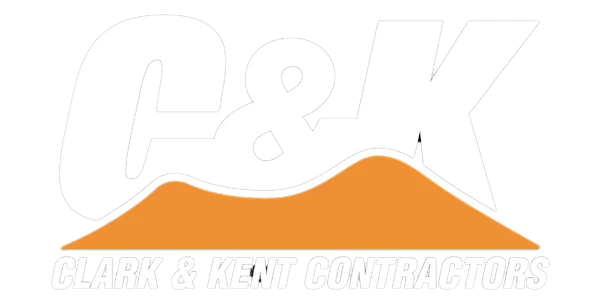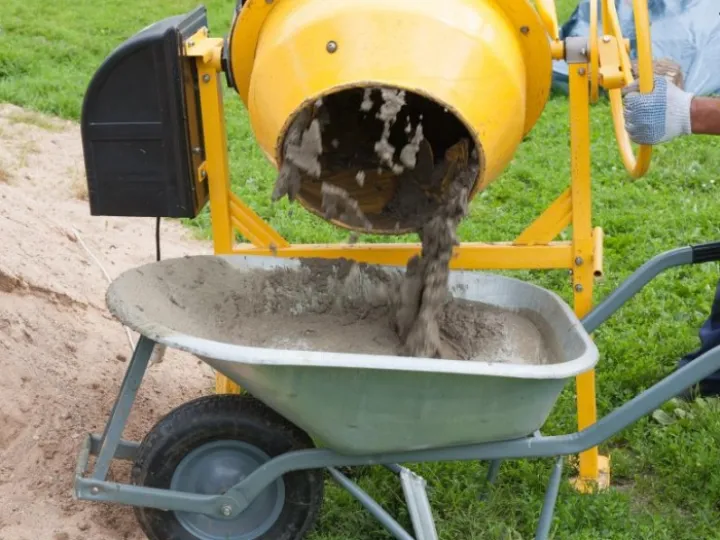Mixing concrete – Tips and advice
Advice on laying concrete
Homeowners can often be put off when it comes to laying or repairing concrete around the home.
People usually have little experience of mixing and laying concrete, so the task seems a daunting one, especially if it requires more than a barrowload or two of mixed concrete.
Professionals like Clark & Kent can have your concrete laid on a jiffy and you know it will be a first-class job but, with a little know-how, proper preparation and some hard work there is no reason not to tackle it yourself.
Measuring and mixing concrete
Proper measurement and good concrete mixing ratios are vital for sound concreting projects, especially if the concreted area is to support any weight such as a shed or cars on a driveway.
Follow cement mixing ratios rigidly if you want to produce a good, long-lasting and robust surface.
There are four basic mixing elements for concrete: sand, cement, aggregate and water. The most important ratio is that of water to cement which is usually 1:1.
A common mistake of amateurs when it comes to mixing and laying concrete is to add more water to make it easier to spread. Unfortunately, this practice merely makes the finished concrete weaker, less robust and likely to break up in a very short time.
Sand and aggregate are frequently mixed in the ratio of 3:1, so a strong concrete mix will be one part cement, one part water, three parts sand and three parts aggregate.
What size bucket you use for measuring a concrete mix doesn't matter as long as the ratios are correct. A bigger bucket means you end up making more concrete, but a five-gallon bucket is usually the best for small domestic jobs.
For smaller projects the materials can be dry-mixed in a wheelbarrow using a shovel; for larger projects, a hired cement mixer will be the answer. Whatever the mixing method, the ratios stay the same, and the material should always be thoroughly dry.
Preparing the ground for concrete
You need a good understanding of how to lay concrete before you begin. Proper preparation is critical when it comes to laying concrete and can save time, effort and money.
Larger concrete laying projects will require a precise estimate of the amount of concrete needed, groundworks preparation, wooden frames to hold the wet concrete in place and laying and tamping equipment to smooth and flatten the surface.
Ready-mix concrete delivered by a lorry is a popular choice for larger projects as it is relatively straightforward and saves the task of mixing the concrete yourself. It does, however, require careful planning to ensure the lorry has good access to the site and that the amount ordered is correct for the job in hand.
It is essential to work out exactly how many cubic metres of concrete will be needed to finish the job. This will depend not only on the area to be covered but on the depth of laid concrete as well.
Online charts are available to help work this out, but the usual way is to divide the project up into rectangular slabs and then, for each slab, multiply the length by the width to get the total area. You can them multiply the result by the depth to get the volume. Add all the slab volumes together to get the total cubic volume you need.
Pouring concrete
Most concrete laying jobs, large or small, will require a frame to hold the liquid concrete in place until it sets and cures.
These frames, or forms, are usually built of wood. The area to be concreted is first dug out to the required depth and wooden planks laid around the edge held in place by small stakes driven into the ground.
It is vital to ensure the levels are deep enough and that slopes are correct to carry off any surface water. As a rough guide, an area of concrete two metres wide should have a fall of around 25 millimetres to avoid the risk of standing water.
Sometimes, concrete can be laid on the bare earth (for simple pathways for example, but they will generally need a compacted hardcore sub-base on which to sit. A layer of hardcore 10 centimetres deep is usually enough of a sub-base for a path or driveway, and it should be well compacted.
Concrete is best poured in moderate temperatures. Direct sunlight in hot weather can cause the concrete to cure too quickly and risk uneven drying and cracking. In icy weather the cold air will slow down the curing process and cause the surface to crumble if the water freezes.
Larger areas of concrete can be reinforced with metal rods of mesh incorporated into the wet mix and grooves left between slabs to allow for expansion in hot weather.
Give the sub-base a sprinkling of water before pouring the concrete as this will help it to bond better. The concrete should fill the formwork and then be surface 'tamped' and 'screeded' to ensure an even finish.
Screeding concrete
Tamping and screeding is usually done with a 2x4 wooden plank placed on top of the formwork and rubbed back and forth across the surface of the concrete.
It helps to compact and consolidate the concrete. Rakes can be useful here for spreading the concrete evenly as the surface is tamped down.
After the concrete has been screeded, it is often 'floated' with special trowels to smooth the surface and even out any small depressions.
Curing the concrete
Concrete typically takes several days to harden and cure properly. It is often a good idea to 'mist spray' the surface every 12 hours or so to help it to cure more evenly. A polyethene sheet spread over exterior concrete and pinned down at the edges will help the concrete dry more evenly.
Before the surface has properly hardened many will sweep it gently with a broom to lightly roughen the surface.
Once the concrete has cured and hardened, the formwork can be removed, and the edges cleaned. The concrete surface can be sealed with a suitable sealant to add texture, prevent dust and stop the surface getting slippery.
Clark & Kent Contractors has a wide range of concrete mixers for hire. Call us now on 01630 672329.
Clark&Kent Services Hire
Providing quality specialist plant hire equipment for construction services


